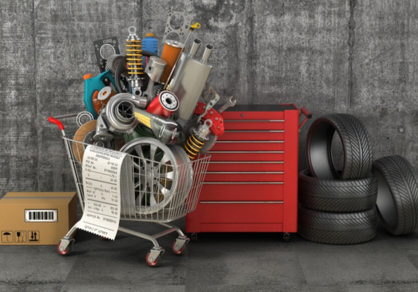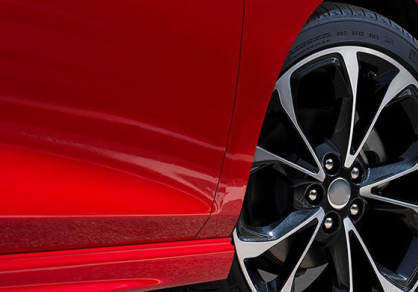Author: Tony Palgiz
Translation: Mansour Abtahi, Saipa Export Management Expert
The number of cars in the market of all ASEAN member countries exceeded one and a half million with a growth of 12% in 2003, so that the growth rate in these regions except Malaysia has reached a relatively good level. These regions suffered major problems last year, such as the spread of SARS and the intensification of terrorist activities, which naturally had a very negative impact on the growth of the export markets of these regions.
Low bank interest rates boosted consumer demand in 2003. The reflection of the high growth of the region’s economy last year was further exacerbated by the increase in consumer confidence, the rise of the stock market and the fall in interest rates. In this way, consumers became more and more accessible to the financial resources to make their purchases. But as domestic debt has grown exponentially, this achievement is generally not considered significant for further growth. Toyota and Honda, which have been launching the Vivos and City models across the region since late 2002, respectively, have benefited the most from high regional demand.
Last year, Thailand was recognized as the largest market among ASEAN markets, with an unexpectedly high growth of 30%. Thailand’s 6.4 percent economic growth is more reminiscent of the mid-1990s, when Singapore suffered the worst possible damage at a time when global IT markets were recovering. It was caused by trapping in SARS. Singapore GDP growth rate announced 0.8; Although the car market rarely reflects its strengths and weaknesses in the real economy, Indonesia, another ASEAN member, is slowing economic growth. But consumers in the country made significant purchases with attractive programs such as the Cash Cash Store.
Continued growth and development in 2004
As short-term demand saturation in some key ASEAN markets in 2004, regional growth and development is expected to increase by about 5% compared to 2003. Events such as the presidential elections in the Philippines and Indonesia, on the one hand, create additional doubts in the consumers of these countries in their purchases, and on the other hand, this hesitation in purchasing directly increases the liquidity of the economic system to buy cars. The recent outbreak of the flu has exacerbated the situation. Overall, however, this is currently considered a short-term problem and will have only a small impact on Indonesia’s economic growth and development.
In the current situation, Malaysian buyers who are still waiting for the improvement of the purchase conditions, which will be due to the reduction of taxes, are expected to return to the market. Over the past year, Proton has seen more sales decline than other Malaysian companies. Although the company is producing its first national car, this year it is looking for a way to return to its previous favorable condition. In Indonesia, despite the political turmoil and the unfavorable economic situation of the country, very extensive activity is being pursued to produce a new model of car that can meet the significant demand for the next two years. Despite the current problems, the security of the region has been recognized to such an extent that several car production projects are being launched in Indonesia this year.
Serious and significant growth and development of Thailand
Over the past year, the Thai economy has grown significantly. Due to the active performance of the export sector and low interest rates that will draw customers to domestic products, the country’s GDP growth in 2003 is estimated at about 6.4 percent. As one of the most stable member countries of the ASEAN trade bloc, Thailand is the first choice for investment among the bloc countries. Over the past six months, domestic trade credit has grown significantly and domestic investment has been growing.
Experts generally believe that the current economic situation is at least equal to last year. The Thai government forecasts at least 8% GDP growth in 2004. Thailand’s domestic economy is growing, and a supplementary budget was recently approved for this year, which will boost economic growth. A full year remains until the 2005 Thai general election, and achieving the projected economic growth is the Thai government’s first priority.
Accordingly, exports are the key to Thailand’s success in achieving its growth goals this year, exports. In this regard, the government has been very active in expanding export opportunities through bilateral trade agreements as well as through attracting foreign direct investment. The construction sector, which suffered heavy losses during the 1997 Thai economic crisis, is now recovering. On the other hand, cautious calls are being heard for a while, as inflation has been rising in recent months and the interest rate cycle seems to be about to return. The growth of the stock market is high compared to its growth throughout the history of Thailand, and real estate transactions have been very slow. But despite these descriptions, few people find these negative factors to affect the growth of the Thai economy this year, especially in terms of the strength of the “Baht” (Thai Baht) against the US dollar.
Thailand’s automotive industry has become a very important business that is gaining increasing global fame. Domestic market demand is rapidly turning into pre-Asian crisis levels, where after-sales service grew by 30% last year, and this figure has been much higher than expected. The Thai Auto Show in Bangkok in November last year boosted car sales at the end of the year, which reached a record high in December, with about 65,000 vehicles sold in Thailand.
Newer models such as the Toyota Vios and Honda City have been in high demand, eventually paving the way for the two automakers to capture a significant share of the Thai car market. Demand for pickup trucks, which make up 60% of the Thai car market, is also very high. Toyota will launch a new pickup model this year, and a new diesel engine will replace the current engine in the Isuzu model, and this should naturally create new interest in this car class. In total, domestic market sales will grow by up to 10% this year and about 5% in 2005.
Investment agreements boost the Indonesian car market
In 2003, as in previous years, Indonesia’s GDP grew by an average of 3.9 percent, mainly due to domestic market consumption. Consumption demand was dramatically high, covering the persistent weaknesses of direct investment and government spending. The export sector is trying to compete with other affluent Asian countries. Over the past 12 months, interest rates have fallen sharply from 13 percent to 8 percent, but inflation remains flat at 4 percent, with the rupee not growing as strongly as the US dollar against the dollar and a small increase in taxes on water prices. Electricity, gas and gasoline were attributed last year.
Although the explosive growth of China’s economy has recently overshadowed investment priorities in many multinational corporations, foreign direct investment has declined in recent years, largely due to the volatile political and legal climate in Thailand. Indonesia, on the other hand, has ceded its investment position to Thailand because Indonesia’s huge foreign debt no longer gives the government a chance to encourage companies to achieve higher levels of growth and development.
The car market was very strong last year, especially due to the poor performance of Indonesia’s more open economy, and now it is doing even better with installment sales, discounts and a fund-saving plan. Despite significant credit growth and consumer purchases, the country’s debt is one of the lowest in Asia, accounting for about 10 percent of GDP, and the country is expected to have room for growth.
The first direct elections in this country are a factor for long-term investors to be more careful in their investments in Indonesia. On the other hand, the budgets allocated to the elections will increase the short-term liquidity level in the economy and directly increase car sales in the country. Continued interest rate cuts will also lead to a boom in the car market.
But most importantly, the introduction of new car models to the market will always increase sales volume. Specifically, the increase in sales volume this year is expected to be about 5 to 7 percent. Toyota and Daihatsu jointly launched small-class work vehicles in Indonesia in January this year for between $ 7,500 and $ 10,000. The number of orders for the “Avanza” car, which is one of the Toyota models, is currently around 20,000 units, which will definitely be more statistics by now.
From the two production models of the two companies, it seems that a total of 60,000 units will be sold in the Indonesian market this year. In August, low-cost passenger cars will be introduced by Suzuki and Toyota’s Kyang, which is Indonesia’s best-selling car, will be introduced to the market. It is also possible that the same boom in the car market will be transferred to 2005, which is possible due to the availability of new models and the high potential for economic growth in the country.
Consumer retreat in Malaysia
With the start of 2003 and the continuation of interest rate cuts, domestic consumption and consumer confidence in Malaysia revived, bringing Malaysian economic growth to 4.6%. The country’s export sector was supported by China’s growing demand for raw materials from Malaysia, which became a key source of short-term export growth. At a time when demand from other foreign markets is on the rise, competition from low-cost countries such as China is growing.
The Malaysian government is forecasting a growth rate of at least 5.5 percent this year, based on better export figures, higher domestic market demand and improved investment. The government has also promised less intervention in the private sector, including the auto industry, and this will be an incentive to attract foreign direct investment in the coming years.



